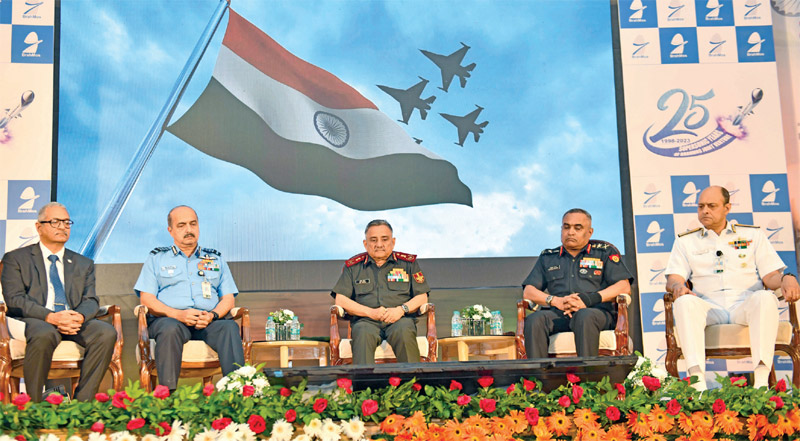Government’s flip flop on self-reliance in defence sector plagues domestic industry
 Shrikumar Sangiah
Shrikumar Sangiah
In June 2023, in the days and weeks preceding Prime Minister Narendra Modi’s visit to the US, India’s national media was awash with news of the planned inking of two major defence contracts.
One of the contracts was for the purchase of 31 Reaper MQ-9 Unmanned Aerial Vehicles (also known as the Predator B drones) from General Atomics. The procurement of these UAVs (15 for the Indian Navy and eight each for the army and the air force) is aimed at bolstering India’s Intelligence-gathering, Surveillance and Reconnaissance (ISR) capabilities.
The Predator-B High Altitude Long Endurance (HALE) UAVs will provide India’s defence forces with the ability to gather real-time intelligence and undertake long-range surveillance and reconnaissance across international boundaries. The Predator-B drone is designed such that it can be disassembled and carried on transport aircraft to a forward location to extend its operational range.
The armed variants of these UAVs carry a formidable array of weapons, IR and daylight cameras, and an impressive suite of sensors to engage air, land, and sea targets. The naval version of the Predator-B called the ‘Sea Guardian’, besides being equipped with sonobuoy dispensing and sonobuoy management and control systems to track submarines, comes armed with precision-guided munitions and small attack drones.
The Predator-B deal also envisages the assembly of these drones in India. Additionally, it proposes the setting up of a global MRO facility in India—to cater to the needs of the other users of Predator drones. Further, the deal stipulates that 8-10 per cent of the UAV’s components be sourced locally from Indian vendors. During final negotiations, it is probable that the domestic sourcing limit would be raised to 15-20 per cent.
The other much-in-the-news contract is the General Electric (GE)-Hindustan Aeronautics Ltd (HAL) deal for the licenced production in India of jet engines for fighter aircraft. The jet engine to be manufactured under the deal is the high-performance F-414 engine that will power the indigenous Light Combat Aircraft (LCA) Tejas Mk2. The Tejas Mk1 and Mk1A are powered by F-404 engines, the predecessor to the F-414.
The F-414 jet engine deal marks the first time that consequential US-origin military equipment will be manufactured in India. Both deals mark a rare departure from what is the US’s norm for the transfer of defence equipment/technology to other nations. The exception, made for India, is significant because India is not a formal US military ally.

Currently, only a small group of nations—the US, Russia, the UK and France—possess the capability to independently design, develop and manufacture jet engines, civil or military. Even China, which has otherwise made tremendous progress in the design and development of defence equipment, is not fully self-reliant in jet-engine technology.
It is hoped that with the signing of the F-414 jet-engine deal, India will finally acquire the capabilities necessary to enter this exclusive group. A similar hope was expressed when an MoU was signed in October-December 2000 between HAL and the Russian manufacturer of Su-30 MKI aircraft for full transfer of technology and its licenced production in India. From publicly available information, it is difficult to infer the extent of indigenous capability that has been acquired through this MoU. The extent of proprietary knowledge that will be shared by GE under the deal and the design capability that HAL will be able to acquire remains to be seen.
Import Dependence
India has among the largest defence industrial complexes in the developing world. It comprises 41 Ordnance Factories (OFs) (reorganised in 2021 into seven different government companies) and nine Defence Public Sector Undertakings (DPSUs) under the administrative control of the ministry of defence (MoD). Further, there are over 150 large, medium and small-sized defence companies in the private sector. There are also around 50 dedicated research laboratories and establishments forming the Defence Research and Development Organisation (DRDO), the research and development (R&D) wing of the MoD.
Despite boasting of this infrastructure, India continues to be overwhelmingly dependent on arms imports to meet its defence needs. The target of 70 per cent self-reliance in defence procurement, set for 2005, is yet to be achieved. Currently, India’s self-reliance in arms stands at around 30-40 per cent. India continues to be among the largest arms importers in the world. During the same period, China which not so long ago, was the world’s largest arms importer, has graduated to being the world’s third-largest arms exporter—behind only the US and Russia.
Even in the equipment being designed and manufactured domestically, the indigenous content is extremely low. The Comptroller and Auditor General (CAG) of India, in a 2011 report submitted to parliament, had commented adversely on the import dependency of the HAL. The report highlighted that for raw materials and bought-out items used in the production of the Advanced Light Helicopter (ALH)—touted as being indigenously designed and developed—there was a 90 per cent import dependency even though the ALH had, by then, already been in production for over a decade.
You must be logged in to view this content.

